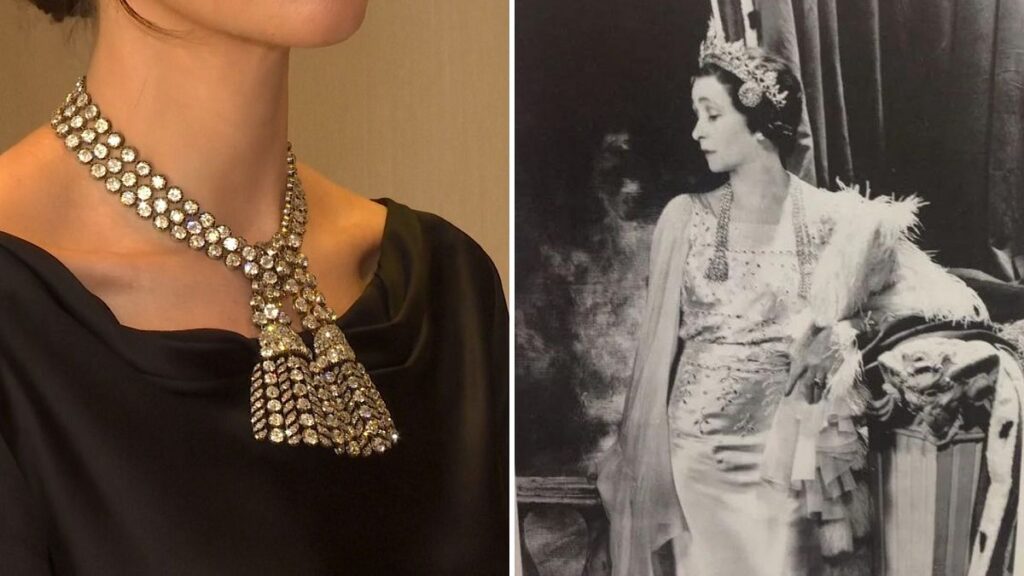Composed of approximately 300 carats of old mine-cut diamonds, the historic piece was once worn during royal coronations and is rumoured to hold ties to the scandal that tainted Marie Antoinette’s reputation.
A remarkably rare 18th-century diamond necklace, possibly tied to a scandal that played a role in the doomed 18th century queen of France, Marie Antoinette’s downfall, has sold for an impressive €4.5 million, exceeding expectations.
The historic piece, weighing approximately 300 carats and composed of around 500 old mine brilliant-cut diamonds, was showcased in Sotheby’s ‘Royal and Noble’ sale in Geneva.
Once owned by high-ranking aristocracy and worn during royal coronations, the necklace was expected to fetch between €1.7 million and €2.6 million but far exceeded its initial estimates.
“It was an electric night,” said Andres White Correal, a Sotheby’s jewellery specialist, after the evening sale of the necklace to an undisclosed female buyer.
“There is obviously a niche in the market for historical jewels with fabulous provenances. People are not only buying the object, they are buying all the history that is attached to it.”
Originally believed to be sourced from the Golconda mines in India, the diamonds are famed for their exceptional clarity and rarity, given that the mines closed over two centuries ago.
“It was famously worn in the 1930s by the 6th Marchioness of Anglesey, whose husband used to own it, in a photograph immortalised by Cecil Beaton showing the glamour and the style of that era and you would have never thought that she was wearing an 18th century jewel,” explains Andres White Correal, the head of the Royal and Noble Sales at Sotheby’s.
‘The Affair of the Necklace’
Adding to its allure, there has been unconfirmed speculation that some diamonds in the necklace might be linked to the infamous 18th-century scandal known as ‘The Affair of the Necklace,’ which tainted the reputation of Marie-Antoinette on the eve of the French Revolution.
Here’s what went down: An extravagant diamond necklace (costing around €16.45 million in today’s money), originally commissioned by King Louis XV for his mistress, Madame du Barry. The Parisian jewellers who crafted it – Charles Auguste Böhmer and Paul Bassenge – found themselves in debt when Louis XV died before purchasing it. They then tried to sell the necklace to his successor, King Louis XVI, hoping his queen, Marie Antoinette, would want it, but she declined.
However in 1784, a grifter named Jeanne de La Motte came up with a cunning scheme to convince her lover Cardinal de Rohan, a high-ranking clergyman, that Marie Antoinette secretly desired the necklace. de La Motte forged letters and arranged for a prostitute to impersonate the queen to mislead Rohan into buying the necklace for her.
Once she got her hands on the necklace, de la Motte disassembled it and shipped its diamonds to London, where they were sold on the black market. However, payments for the necklace never materialised and Boehmer and Bassenge went straight to the queen herself for reimbursement – only for her to be completely unaware of the whole situation.
Arrests followed, trials were held, de la Motte was imprisoned, Rohan was acquitted, and Marie Antoinette was exonerated. However, despite the queen’s innocence, the scandal was enough to damage her reputation and intensified public sentiment against her and the monarchy.
The French Revolution followed…


